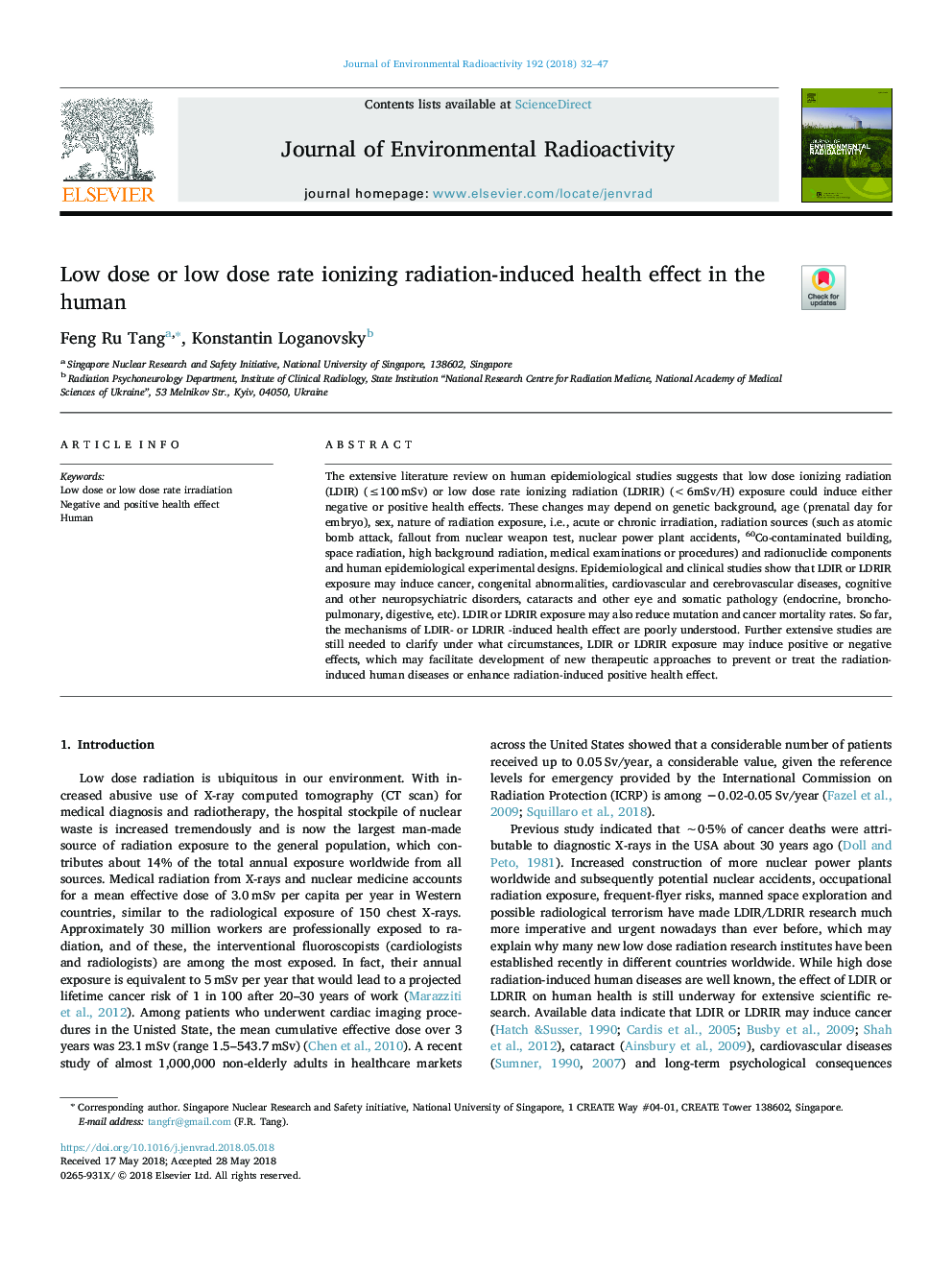| Article ID | Journal | Published Year | Pages | File Type |
|---|---|---|---|---|
| 8080046 | Journal of Environmental Radioactivity | 2018 | 16 Pages |
Abstract
The extensive literature review on human epidemiological studies suggests that low dose ionizing radiation (LDIR) (â¤100â¯mSv) or low dose rate ionizing radiation (LDRIR) (<6mSv/H) exposure could induce either negative or positive health effects. These changes may depend on genetic background, age (prenatal day for embryo), sex, nature of radiation exposure, i.e., acute or chronic irradiation, radiation sources (such as atomic bomb attack, fallout from nuclear weapon test, nuclear power plant accidents, 60Co-contaminated building, space radiation, high background radiation, medical examinations or procedures) and radionuclide components and human epidemiological experimental designs. Epidemiological and clinical studies show that LDIR or LDRIR exposure may induce cancer, congenital abnormalities, cardiovascular and cerebrovascular diseases, cognitive and other neuropsychiatric disorders, cataracts and other eye and somatic pathology (endocrine, bronchopulmonary, digestive, etc). LDIR or LDRIR exposure may also reduce mutation and cancer mortality rates. So far, the mechanisms of LDIR- or LDRIR -induced health effect are poorly understood. Further extensive studies are still needed to clarify under what circumstances, LDIR or LDRIR exposure may induce positive or negative effects, which may facilitate development of new therapeutic approaches to prevent or treat the radiation-induced human diseases or enhance radiation-induced positive health effect.
Keywords
Related Topics
Physical Sciences and Engineering
Energy
Nuclear Energy and Engineering
Authors
Feng Ru Tang, Konstantin Loganovsky,
